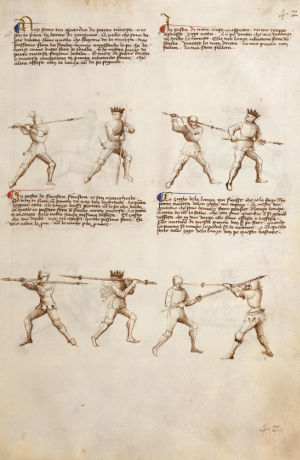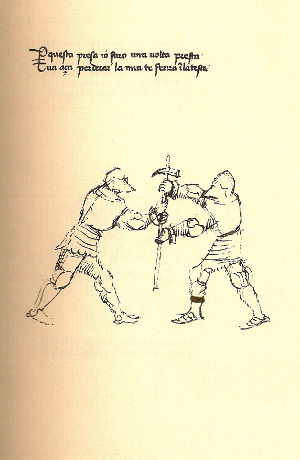Armoured Combat (arme) 
Armoured combat training at AEMMA is one of a number of training programs offered at the Academy. This form of training and fighting arts is reserved for students of the Academy who have achieved at a minimum, a scholler's rank and who of course has accumulated a historically correct harness, which is centred around 14th century transitional armour. [1] Most people when they first visit or see AEMMA believe that they must be outfitted with a period harness very early and that it would be a costly proposition for them. This is, in fact, not the case. AEMMA has many students who've been training for 2 or more years who do not have armour and who are focused on mastering the various weapons fighting styles offered without the need for armour. However, all "unarmoured" fighting skills learned can be easily leveraged into armoured fighting.





For those individuals who do wish to pursue armoured combat training, they must first go through the core recruit training program. This offers the student all of the basic and foundational skills needed to move on to armoured training. Armoured combat training is scheduled at least once per week, and more frequently, is offered twice per week depending upon the schedule. The training involves working with longsword, grappling, dagger, spear and pollaxe.
The armour of the 14th century was characterized by the increased useage of plate armour made of various materials, including latten (a brass-like copper alloy), whalebone, iron and steel. For the duration of the 14th century, the knight would continue to wear a chain mail hauberk. The hauberk only reached to just below hip level, sleeves extending to the wrist. Mail chausses were worn, covered with plate armour on the legs, called greaves strapped with leather behind the legs. After mid 14th century, the arms were frequently completely covered in plate armour and the arm protection was completed with a pair of gauntlets. In the latter half of the century, breast plates made their first appearance. During the latter part of the century a body defense known as a brigandine was developed. This was a piece of body armour which followed the principle of a coat of plates. [2] [3]
- Transitional armour describes the armour used in Europe around the 14th century, as body armour moved from simple mail hauberks to full plate. In general, mail did not completely disappear during this evolution of armour, as it was still worn under the plate, in particular, on the body itself and a mail coif attached to the helm in many instances. source: Wikipedia. Plate armour. Retrieved: January 18, 2017.
- Early plate in Italy, and elsewhere in the 13th–15th century were made of iron. Iron armour could be carburised or case hardened to give a surface of harder steel. Plate armour became cheaper than mail by the 15th century as it required less labour and labour had become much more expensive after the Black Death, though it did require larger furnaces to produce larger blooms. Mail continued to be used to protect those joints which could not be adequately protected by plate, such as the armpit, crook of the elbow and groin. Another advantage of plate was that a lance rest could be fitted to the breast plate. source: Medieval Warefare. Medieval Warfare - Armour & Shields. Retrieved: January 18, 2017.
- This erroneous but common belief is probably a result of the romantic notion of the “knight in shining armor,” an image that itself harbors a host of further misconceptions. First, knights rarely fought alone, nor did medieval and Renaissance armies consist entirely of mounted knights. source: The MET. Arms and Armor—Common Misconceptions and Frequently Asked Questions. Retrieved: January 18, 2017.

